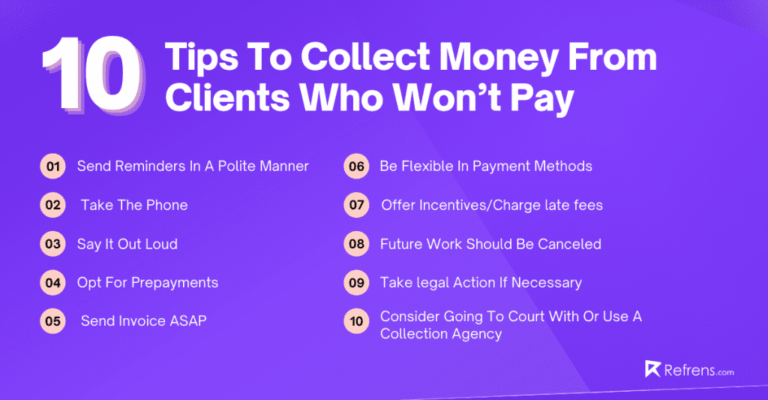
The internet has come a long way since its early days, transforming from a chaotic digital frontier into a more regulated and controlled space. But in the 1990s and early 2000s, it was a Wild West of unfiltered content, where almost anything could be found. rotten.com was a website that became synonymous with this era. Launched in 1996, it was one of the most infamous shock sites on the web, hosting disturbing, graphic, and explicit material that catered to morbid curiosity.
This article will explore the history, impact, and eventual decline of rotten.com. Along the way, we will examine the ethical debates it sparked and its place in early internet culture.
Table of Contents
Origins of rotten.com
In 1996, a mysterious group of web designers launched rotten.com. Unlike many other websites that sought to inform or entertain, rotten.com aimed to shock, disgust, and provoke. The site’s creators remained largely anonymous, though it was known that they operated under the pseudonym “Soylent Communications.” This anonymity added to the allure and mystery surrounding the site.
The creators claimed their goal was to provide a digital archive of “images and information related to the human condition.” However, the content they curated went far beyond what most people would consider palatable or appropriate. rotten.com quickly became a hub for content that mainstream media wouldn’t touch—often because it was too graphic, violent, or disturbing.
The site’s layout was intentionally minimalistic, with plain HTML pages that loaded quickly even on the slow dial-up connections of the time. This simplicity ensured that rotten.com was accessible to anyone with internet access, regardless of technical ability.
Types of Content Found on rotten.com
The content on rotten.com was notorious for its graphic nature. Some of the categories included:
- Graphic images of fatal accidents: Car crashes, workplace mishaps, and other traumatic incidents were often featured.
- Violence and death: Images of dead bodies, sometimes in states of decomposition or extreme trauma, were common.
- Medical oddities: The site frequently showcased rare and disturbing medical conditions, including birth defects and surgeries gone wrong.
- Criminal cases: Rotten.com featured gruesome crime scene photos, mugshots, and other content related to notorious criminal cases.
- Celebrities in unfortunate situations: It wasn’t uncommon for the site to feature shocking images of celebrities, including those involved in accidents or scandals.
- Morbid curiosities: Unusual historical images, bizarre events, and disturbing facts from history.
The variety and extremity of the content found on the site contributed to its infamy. For many users, it was a guilty pleasure—a place they visited to see things they couldn’t find elsewhere. For others, it was a cautionary tale of how unregulated the early internet could be.
The Popularity and Infamy of rotten.com
During its peak in the late 1990s and early 2000s, rotten.com was wildly popular. The site gained traction through word of mouth and early internet communities, often being shared in chat rooms and forums as a place to find the most shocking content imaginable.
Part of the site’s appeal was its taboo nature. Visitors knew they were about to encounter something disturbing, which made it both exciting and repulsive. This sense of crossing a boundary attracted a wide range of users, from morbidly curious teenagers to adults who found fascination in the darker aspects of life.
Key Reasons for Its Popularity:
- Shock Value: The site’s explicit images often induced visceral reactions, with visitors experiencing both fascination and disgust.
- Anonymity of Browsing: In an era before social media and personalized tracking, users could browse without fear of being identified, which encouraged more people to visit and explore the content.
- Curiosity about Taboo Subjects: Many people are inherently curious about things considered off-limits, especially when it comes to death and violence. Rotten.com capitalized on this curiosity.
- Lack of Alternatives: There were very few sites that offered such graphic content at the time. As a result, rotten.com filled a niche that mainstream media and other websites avoided.
- Internet Virality: The site became a viral phenomenon, with people sharing links and recommending it to friends in the early days of email and chat platforms like AOL Instant Messenger and IRC.
Controversies and Ethical Concerns
With its rise in popularity came a wave of controversy and criticism. Rotten.com was notorious for pushing the limits of decency, and many questioned whether such a site should exist at all.
Ethical and Legal Concerns
- Exploitation of Death and Tragedy: Many critics argued that rotten.com was exploitative, taking images of real-life death and suffering and turning them into a spectacle. Families of victims in some cases were horrified to discover that images of their deceased loved ones were being displayed on the internet without consent.
- Freedom of Speech vs. Decency: Supporters of the site often defended it on the grounds of free speech, arguing that while the content was disturbing, the site’s creators had the right to display it. Opponents argued that free speech had limits and that there should be ethical considerations when publishing such content.
- Lack of Consent: Many of the images on the site were taken from crime scenes, accident sites, or medical conditions, often without the consent of the individuals involved. This raised significant privacy concerns.
- Access to Minors: Rotten.com was not age-restricted, and anyone with an internet connection, including minors, could access its graphic content. This led to calls for stronger regulation of the internet to prevent children from being exposed to such material.
- Internet Regulation: Rotten.com contributed to the ongoing debates about internet regulation. Should there be restrictions on what type of content could be hosted online, or should the internet remain an unregulated space where anything could be shared?
Notable Incidents
There were several high-profile incidents where rotten.com was criticized for specific content:
- Princess Diana’s death: Shortly after the tragic death of Princess Diana in 1997, rotten.com posted graphic photos of the aftermath of the crash. This led to widespread outrage, particularly in the UK, where the royal family is highly respected.
- The Columbine Massacre: Following the 1999 Columbine High School shooting, the site posted disturbing crime scene photos, which ignited public outrage and brought rotten.com back into the spotlight for all the wrong reasons.
The Decline of rotten.com
By the mid-2000s, the internet landscape began to change. Social media platforms like MySpace, Facebook, and YouTube began to dominate, offering user-generated content that was more moderated and mainstream. As the internet matured, the once-thriving community of sites like rotten.com started to dwindle.
Several factors contributed to the decline of rotten.com:
- Increased Internet Regulation: As governments began to impose stricter regulations on internet content, it became harder for shock sites to operate freely. Laws regarding privacy, decency, and online harassment began to take shape, and rotten.com faced more challenges in maintaining its content.
- Mainstream Platforms Take Over: As major platforms like Facebook and Twitter took hold, they brought with them more regulated and curated content, which drove casual internet users away from shock sites. Rotten.com couldn’t compete with the polished experiences these platforms offered.
- Public Sensibility Shift: As the internet became more integrated into daily life, many users no longer sought out the type of explicit and shocking content that rotten.com provided. There was a general shift toward more positive, community-driven platforms.
- Technological Advancements: By the late 2000s, advancements in online filters and parental control tools made it easier for parents, schools, and workplaces to block sites like rotten.com.
By the time rotten.com officially ceased updates around 2012, it was already a relic of an earlier internet era. The site remained accessible for a few more years, but without fresh content, its user base dwindled. Eventually, the site went offline entirely around 2017.
The Legacy of rotten.com
Despite its demise, rotten.com’s legacy endures as a reminder of the internet’s early lawlessness. It was a trailblazer in the shock site genre, inspiring similar websites like ogrish.com and BestGore.com, both of which also hosted explicit and often illegal content. These sites, too, have either disappeared or faded into obscurity.
Today, the internet has become a much more moderated space, with major platforms enforcing strict content guidelines. The wild frontier of the early web has been tamed, but rotten com serves as a reminder of what the internet once was: a chaotic, unregulated space where almost anything could be shared.
Rotten.com’s Impact on Internet Culture
The rise and fall of rotten.com had several notable impacts on internet culture:
- It highlighted the need for better regulation and moderation of graphic and explicit content online.
- It sparked debates about free speech and the limits of acceptable content, forcing society to reckon with the dark side of unregulated content.
- It paved the way for more modern discussions about ethical content sharing, privacy, and the importance of consent when distributing sensitive material online.
Conclusion
rotten com was more than just a shock site—it was a product of its time, reflecting the early internet’s chaotic and unregulated nature. It provided a space where morbid curiosity could thrive, but it also raised important questions about ethics, privacy, and the limits of free speech. While it no longer exists today, its legacy remains etched in the annals of internet history, serving as a cautionary tale about the darker aspects of online content.
Though the internet has moved on, rotten com remains a potent symbol of what the early web once was, and what it has since evolved beyond.
Also read about – Sportsfanfare com: Your One-Stop Shop for Sports Merchandise and Memorabilia





